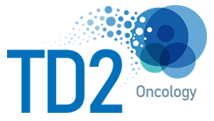As an oncology researcher, it’s essential to have access to molecularly defined models that recapitulate tumor-promoting cancer drivers. But which models are best, and how can you ensure you’re selecting the right ones with the right contexts for preclinical success?
For starters, your model selection should complement your clinical strategy and be validated in relevant clinical settings. The process typically starts with specific filters tailored to the project’s mechanism of action (MOA). Depending on the research, categories of models might include these types:
Syngeneic Tumor Models
These models, also known as allograft mouse tumor systems, consist of tumor tissues that have been taken from the same genetic background of a specific mouse strain. Solid tumors or cancerous cells are transplanted into the host mouse. The mice in these studies don’t need to be immunosuppressed—due to the shared tissue and recipient ancestry, their immune systems will not reject their transplant. The process can be completed in a variety of ways:
Orthotopic Tumor Models: With orthotopic models, the tumor placed in the site wouldn’t arise naturally in the host. For instance, a human liver tumor cell placed inside a mouse’s liver is irregular. The most important part of the process is that the cells are implanted in an anatomical position in the mouse that corresponds with where they existed in the human.
Subcutaneous Tumor Models: In this method, tumor cells are placed just below the host’s skin.
Why Use Them? Researchers can monitor tissues for growth, metastasis, shrinkage and overall survival rate in the context of an intact immune system. Treatment potentials can also be assessed through this process.
Human Tumor Xenograft Models
These models consist of tumor tissues that have been taken from humans and impanted into a host mouse. Human tumor cells are transplanted, either subcutaneously or orthotopically, into immunocompromised mice to reduce or eliminate the rejection of that tumor due to a host immune response.
Why Use Them? Researchers can monitor tissues for growth, metastasis, shrinkage and overall survival rate in the context of a human tumor. Treatment potentials can also be assessed through this process.
Genetically Engineered Mouse (GEM) Models
The genetic profile of these mice is altered such that one or several genes thought to be involved in transformation or malignancy are mutated, deleted or overexpressed. The effect of altering these genes is studied over time and therapeutic responses to these tumors can be followed in this specialized in vivo setting.
Why Use Them? Researchers can monitor tissues for growth, metastasis, shrinkage and overall survival rate in the context of a specific mutational context thought to be a driver of the disease. Treatment potentials can also be assessed through this process.
Patient-Derived Xenograft Models (PDX)
PDXs involve the implantation of cancerous tissue from a human patient’s primary tumor into an immunodeficient mouse.
Why Use Them? Sponsors may face many challenges in their cancer drug research through syngeneic models becase positive tumor responses in mouse models don’t always transfer to humans. With PDXs, the exact type of cancer injected into the mouse can be tested to allow for a more accurate understanding and treatment result. The cancer carries human genetic material, which makes it more representative of mutation properties of human cancer.
Find the Right Mix of Models With TD2
Your drug’s MOA is unique, and you need the right models based on that MOA. But if your CRO isn’t providing the right filters to help you find the right models for your project—and following that search up with targeted interrogation—it can be like finding a needle in a haystack.


